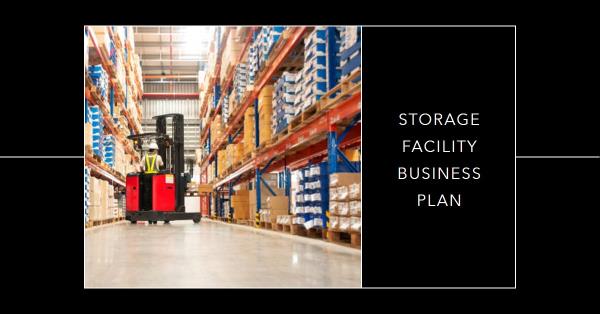Introduction:
Starting a storage facility business can be a lucrative venture with the potential for long-term growth. This industry is essential for many businesses and individuals who require storage space for their goods or equipment. In this business plan, we will provide a comprehensive roadmap for starting and running a successful storage facility business.
Market Analysis:
The storage facility industry is a growing market with high demand. In the US, there are over 50,000 storage facilities, with a total rentable space of 2.3 billion square feet. The industry generates over $38 billion in revenue annually. As people continue to accumulate more possessions, the demand for storage space is likely to increase, making this a promising industry for new businesses.
Pros:
High demand and potential for growth
Can be operated as a passive income business
Requires minimal staffing and maintenance costs
Low start-up costs compared to other businesses
Provides a stable source of income due to recurring monthly rent
Cons:
Seasonal fluctuations in demand may affect revenue
Potential competition from established storage facilities
Regulations regarding environmental and safety standards can be complex
Skills and Expertise:
To operate a successful storage facility business, the following skills and expertise are recommended:
Strong communication and customer service skills
Knowledge of accounting and finance to manage the business’s financial aspects
Familiarity with marketing strategies to attract new customers
Understanding of logistics and warehouse management
Knowledge of zoning regulations and environmental standards
Familiarity with security and surveillance systems
Roadmap:
Conduct market research to determine the potential demand for storage facilities in your target area.
Choose an appropriate location with easy accessibility and ample space to accommodate your storage units.
Develop a business plan outlining your financial projections, marketing strategies, and staffing needs.
Obtain the necessary licenses and permits to operate a storage facility.
Purchase or lease a storage facility and set up security and surveillance systems.
Acquire and install storage units, shelving, and other necessary equipment.
Develop a pricing strategy that is competitive with other storage facilities in the area.
Develop a marketing strategy to attract customers, including online advertising and promotional events.
Develop a system for managing customer accounts and maintaining accurate records.
Hire staff or contractors to maintain the facility, provide customer service, and manage the financial aspects of the business.
Financial Projections:
The financial projections for a storage facility business depend on various factors such as location, unit size, and pricing strategy. On average, the monthly rent for a storage unit ranges from $50 to $200, with larger units commanding a higher price. If you plan to operate a mid-sized storage facility with 100 units, you can expect to generate around $60,000 in revenue per year. Operating costs such as rent, utilities, and staffing can vary depending on the location and size of the facility.
Marketing Strategy:
To attract new customers, you can use online advertising and social media to promote your storage facility. In addition, offering special promotions such as discounted rent for the first month or referral bonuses can also be an effective marketing strategy. Building relationships with local real estate agents, contractors, and businesses that may need storage space can also be beneficial.
Risk Management:
To mitigate potential risks, you can purchase insurance policies that cover damage or loss of customers’ property. Additionally, implementing proper safety measures, such as fire extinguishers and smoke detectors, can help prevent accidents and comply with regulations. Regular maintenance and inspection of the facility can also help identify potential risks and prevent them from becoming hazards.
Marketing and Sales Strategy
The marketing and sales strategy for a storage facility business should focus on reaching out to potential customers and communicating the benefits of using your storage facility over other options. Some effective marketing strategies for this industry include:
Digital Marketing: This involves using online channels such as social media, search engines, and email marketing to reach potential customers. This strategy can include creating a website for your business, running targeted online ads, and engaging with customers on social media platforms.
Referral Programs: Encouraging existing customers to refer their friends and family can be an effective way to generate new business. Consider offering incentives for referrals, such as a discount on their next rental fee.
Local Advertising: Advertising your storage facility in local newspapers, radio stations, or billboards can help you reach customers in your area who may not be actively searching for storage solutions.
Partnership with Local Businesses: Partnering with local businesses that may require storage solutions for their inventory can also be a great way to generate business.
Financial Plan
The financial plan for a storage facility business should include projections for revenue and expenses over the first few years of operation. Some important financial factors to consider include:
Startup Costs: This includes the costs associated with leasing or purchasing a facility, outfitting it with storage units, and acquiring any necessary equipment.
Operating Costs: This includes ongoing expenses such as rent or mortgage payments, utilities, property taxes, insurance, maintenance, and marketing.
Revenue Streams: The main source of revenue for a storage facility business is rental fees. It is important to project rental rates based on the size of the unit, the location of the facility, and the competition in the area.
Profit and Loss Projections: Based on your revenue and expense projections, you should create a profit and loss statement to determine the profitability of your business.
Conclusion
Starting a storage facility business can be a lucrative and rewarding venture, but it requires careful planning and execution. By following the steps outlined in this business plan, you can ensure that you have considered all the important factors and are well-positioned for success in the storage facility industry.




